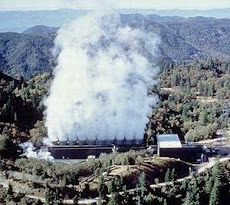By Cathy Locke
clocke@sacbee.com
Published: Friday, Apr. 17, 2009 - 12:00 am | Page 1B
A home on the range might be best for the iconic mustang. But a stopover on El Dorado County's Georgetown Divide could make the transition to domestic life easier for wild horses removed from public lands.
It also could provide a retreat for suburbanites looking to connect with their agrarian heritage, an educational center for schoolchildren and business opportunities for residents of the rural region.
"The horses will never pay for themselves," said Pilot Hill resident LaDonna Smith, president of the American Mustang Foundation. "We're trying to build a small economy around them."
Established by a group of equestrians on the Georgetown Divide, the foundation aims to develop a center to train mustangs to make them more adoptable. But to sustain the operation and serve the economic needs of the Divide, the project would incorporate a number of features to promote agricultural tourism.
The foundation seeks to acquire up to 200 acres and is looking at properties near the Highway 49 corridor, close to equestrian trails in El Dorado County as well as the Western States Trail in Placer County, site of the annual 100-mile Tevis Cup Ride.
The business plan calls for a regional equestrian center with spectator and training arenas, classrooms and instructional areas, and overnight lodging for horses and their owners. It also envisions income from a working farm, selling meat and produce, and providing agricultural tours and educational programs.
Smith, who has a degree in agriculture education, and other foundation members, including horse trainer Scott Drake of Placerville and landscape architect Kit Veerkamp of Cool, are pursuing on their own property many of the activities planned for the proposed "legacy ranch."
Mustangs GT and Pilot share a corral on Smith's small ranch.
Seven-year-old GT spent his first four years roaming the range south of Elko, Nev., before Smith acquired him through the federal Bureau of Land Management's Wild Horse and Burro Program. He's responded well to training. Smith's 6-year-old daughter rides GT, and earlier this week he looked on tolerantly as 3-week-old piglets raced around him in the corral.
Pilot is about 5 years old and was removed from state-owned lands in Nevada. He was adopted, "but he didn't get people who were very confident," Smith said. "He was just a captive wild (horse)."
Smith has been working with him for about six months, and now she can saddle and bridle him.
"One of the biggest goals," she said, "is to clear up the mustang myth that they are wild, crazy animals that you can't do much with."
Jason Williams, a Folsom-based compliance specialist with the BLM program, said the proposed center would be a boon for the federal agency.
"It would really help us out in finding homes for horses," he said.
Nearly 32,000 wild horses and burros removed from federal lands are fed and cared for in short- and long-term holding facilities.
The agency seeks to place animals in private care through adoptions and sales, but adoptions fell from 5,701 in fiscal year 2005 to 3,706 in 2008, according to the bureau's Web site.
The American Mustang Foundation's proposal is ambitious, but Shermain Hardesty, director of the University of California, Davis, Small Farm Program, said agritourism has significant public appeal.
"It's so novel, because we've moved so far away from this type of experience," she said.
Such a project would require plenty of working capital, Hardesty said, and regulatory requirements are common hurdles.
Sam Driggers, county economic development director, sees the project as just the spark the area needs. The county's Economic Development Advisory Committee and Agricultural Commission have endorsed the proposal.
"It's a game changer," Driggers said, explaining that the equestrian center and farm could attract businesses ranging from bed and breakfast inns to veterinary clinics.
The foundation's business plan estimates $10 million to $12 million will be needed to acquire land and develop facilities.
Driggers doesn't see funding as a major obstacle, citing various grant and loan opportunities for nonprofit organizations.
There may be some naysayers, Driggers said, but he predicted the project would go through the county planning approval process with little opposition.
"If anyone is going to try to develop a project in El Dorado County," he said, "I think this is the way they should do it."
http://www.sacbee.com/ourregion/story/1787200.html
Friday, April 17, 2009
Subscribe to:
Post Comments (Atom)



















No comments:
Post a Comment